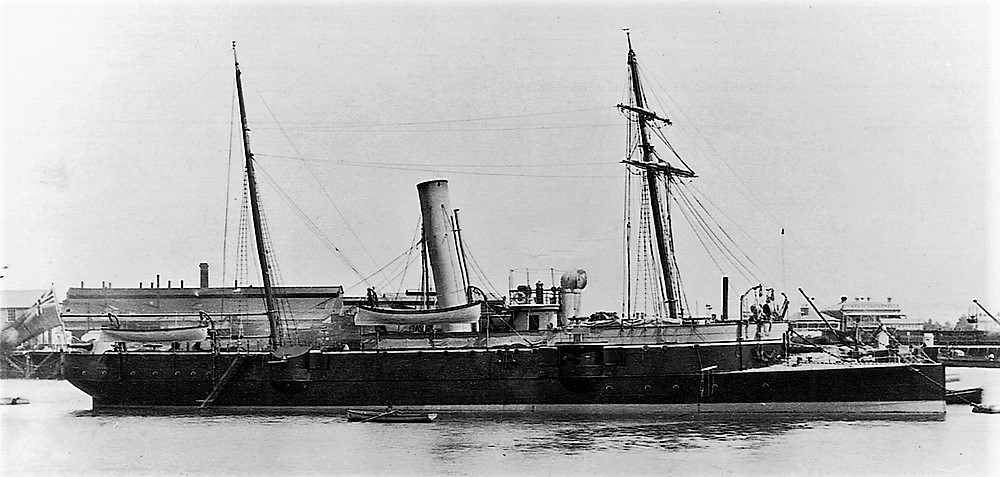October 2019
By Kingsley Perry, Committee member, Naval Historical Society of Australia
Occasional Paper Number 62 about the navy in South Australia from colonial days included reference to the acquisition of HMCS Protector in 1884 and her service in South Australia until 1900. She was then offered up to the imperial government as part of the expedition to China and the Boxer Rebellion.
She joined the ‘Eight Nation Alliance’ to protect their interest in China, temporarily commissioned as HMS Protector. It was thought that her shallow draft would be useful, but that turned out not to be a particularly useful attribute, but she carried out useful work in surveying and despatching. She returned to Australia in November 1900. In 1901 Protector was absorbed into the Commonwealth of Australia Naval Force.
She was then used as a training ship until becoming part of the new Royal Australian Navy in 1911. Now as HMAS Protector, she was modified as a patrol vessel and as a tender to the warship HMAS Cerberus. At the start of World War I she became parent/tender to the submarines AE1 and AE2, and in August 1914 accompanied them to German New Guinea waters. When the German colonies surrendered in September, Protector remained in Rabaul as a port guard ship, and then returned to Australia with HMAS Fantome in October 1914.
In October 1915 Protector sailed to the Cocos Islands for two months to investigate the salvage of SMS Emden. She then returned to Melbourne to resume tender duties for Cerberus, and also acted as a minesweeper in Victorian waters. In 1921 she was renamed HMAS Cerberus II and was used as a tender for the Flinders Naval Depot.

In 1924 the old Protector finished her career as a warship. Her armaments, turrets and engines were sold and she was converted to a lighter. She was sold in 1931 and renamed Sidney, as a wool lighter. Her service in war, however, was not yet over.
In 1943 she was requisitioned by the US Army and taken north. However, on the way she was damaged during a collision with a tug and was abandoned on a beach near Gladstone, Queensland. There she lay, her life seemingly well and truly over. But there was still some signs of life left in the old hulk yet.
The hulk was purchased for the princely sum of ten pounds by Captain Christian Poulson who owned the Heron Island tourist resort in the Great Barrier Reef. It was refloated and taken to Heron Island to be scuttled and used as a breakwater. It is still there today, lying on the reef crest at the entrance to the harbour.
Poulson established a tourist hotel on Heron Island in 1932. By 1943, at the time he acquired what remained of the old Protector, the island was declared a national park. At that time the resort comprised a large main building, some cabins, a tennis court, and water treatment facilities. When the war ended, Poulson opened up tours, and founded Barrier Reef Airways to provide a weekly Catalina flying boat service from Brisbane. In 1950 a marine research station was established, and marine research and education continues as a major aspect of the island’s activities. The resort was taken over by P&O Australian Resorts in 1980, has been renovated a number of times, and is a popular tourist destination.
The deteriorated and rusted hulk of the Protector clearly marks the entrance to the channel to the small harbour, and is one of the first sights for visitors as they arrive at the island. The management of the resort goes to good lengths to educate visitors about the history of this remarkable ship.
Other pieces of the Protector are preserved elsewhere. Her stern 6-inch breech-loading gun is outside TS Adelaide at the Birkenhead Naval Deport in Birkenhead, South Australia. A 4-inch quick firing gun is on display outside the Elizabeth and Salisbury Navy Club in Elizabeth, South Australia. The ship’s wheel is on display at the RAN Heritage Centre in Garden Island, Sydney.





